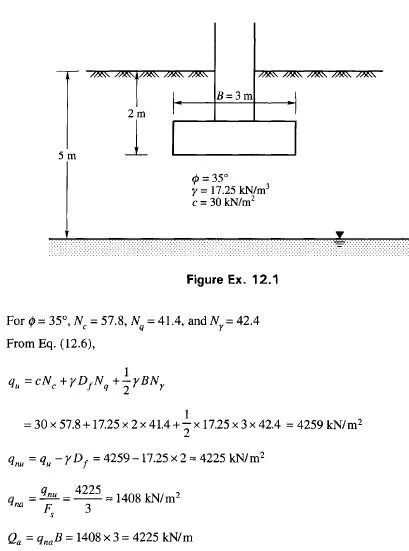Piles may be classified according to their composition as
1. Timber Piles,
2. Concrete Piles,
3. Steel Piles.
Timber Piles: Timber piles are made of tree trunks with the branches trimmed off. Such piles shall be of sound quality and free of defects. The length of the pile may be 15 m or more. If greater lengths are required, they may be spliced. The diameter of the piles at the butt end may vary from 30 to 40 cm. The diameter at the tip end should not be less than 15 cm.
Piles entirely submerged in water last long without decay provided marine borers are not present. When a pile is subjected to alternate wetting and drying the useful life is relatively short unless treated with a wood preservative, usually creosote at 250 kg per m3 for piles in fresh water and 350 kg/m3 in sea water.
After being driven to final depth, all pile heads, treated or untreated, should be sawed square to sound undamaged wood to receive the pile cap. But before concrete for the pile cap is poured, the head of the treated piles should be protected by a zinc coat, lead paint or by wrapping the pile heads with fabric upon which hot pitch is applied.
Driving of timber piles usually results in the crushing of the fibers on the head (or brooming) which can be somewhat controlled by using a driving cap, or ring around the butt.
which can be somewhat controlled by using a driving cap, or ring around the butt. The usual maximum design load per pile does not exceed 250 kN. Timber piles are usually less expensive in places where timber is plentiful.
Concrete Piles. Concrete piles are either precast or cast-in-situ piles. Precast concrete piles are cast and cured in a casting yard and then transported to the site of work for driving. If the work is of a very big nature, they may be cast at the site also.
Precast piles may be made of uniform sections with pointed tips. Tapered piles may be manufactured when greater bearing resistance is required. Normally piles of square or octagonal sections are manufactured since these shapes are easy to cast in horizontal position. Necessary reinforcement is provided to take care of handling stresses. Piles may also be prestressed.
Maximum load on a prestressed concrete pile is approximately 2000 kN and on precast piles 1000 kN. The optimum load range is 400 to 600 kN.
Steel Piles. Steel piles are usually rolled H shapes or pipe piles, H-piles are proportioned to withstand large impact stresses during hard driving. Pipe piles are either welded or seamless steel pipes which may be driven either open-end or closed-end. Pipe piles are often filled with concrete after driving, although in some cases this is not necessary. The optimum load range on steel piles is 400 to 1200kN.


